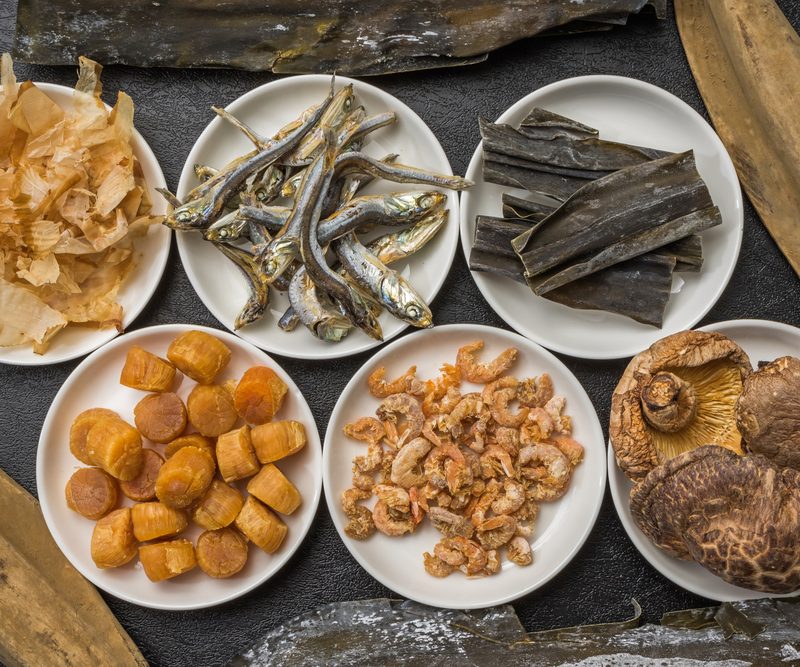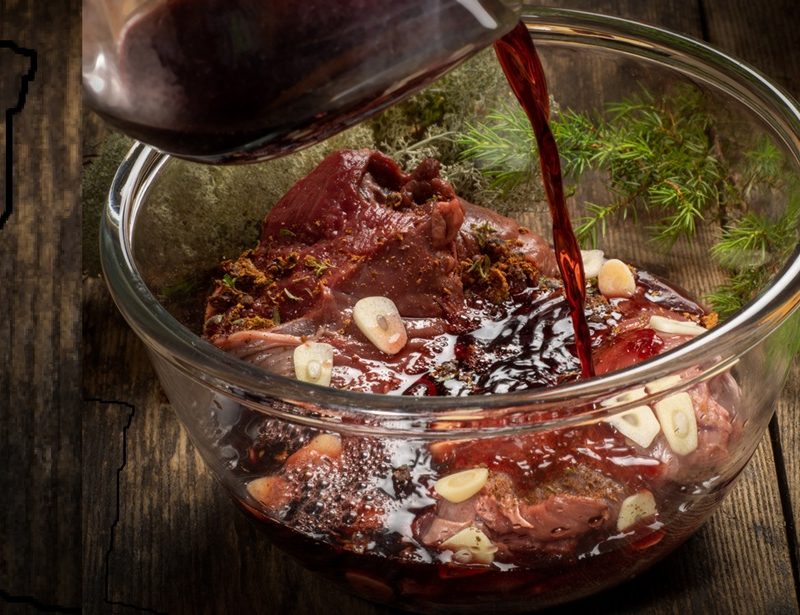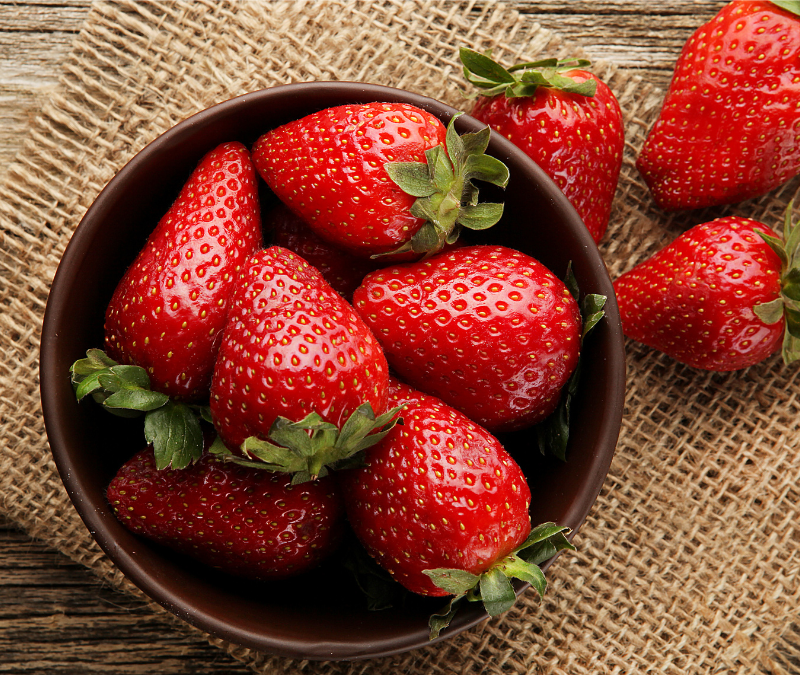When it comes to food, children are the toughest critics.
Their preferences are shaped not just by taste but by a combination of factors like color, texture, and even the aroma of what’s on their plate. In a world where health-conscious parents are increasingly seeking nutritious options, the challenge for food manufacturers is to create flavors for kids that meet these nutritional demands and appeal to the discerning palates of children.
This delicate balance can be achieved through the art and science of crafting natural flavors that captivate kids’ taste buds while ensuring safety and adherence to nutritional standards. In this article, we’ll explore the key elements involved in developing flavors that resonate with children and how these expertly crafted flavors can transform ordinary meals into extraordinary experiences for young eaters.
Understanding Kids’ Flavor Preferences
Crafting flavors that resonate with children requires an in-depth understanding of what drives their taste preferences. Unlike adults, children often have a heightened sensitivity to certain tastes and a distinct way of interacting with food.
To effectively design flavors that appeal to them, it’s essential to consider their innate preferences, psychological influences, and the cultural factors that shape their eating habits.
1. Taste Sensations:
Sweet, Sour, Salty—What Do Kids Naturally Gravitate Towards?
Children have a natural inclination towards certain flavors, with sweetness often reigning supreme. This preference is thought to be evolutionary, as sweet tastes are associated with energy-dense foods, which are crucial for growth.
However, children also enjoy a balance of flavors, including mild sourness or a hint of saltiness, which can make foods more exciting and palatable. Understanding this preference for a sweet-sour balance can be key when developing flavors for products like beverages, snacks, and desserts.
2. Psychological Factors:

How Color, Texture, and Aroma Influence Kids’ Food Choices
Kids are highly visual eaters, frequently making food choices based on how something looks rather than how it tastes.
Bright, vibrant colors can attract their attention, while interesting textures can make the eating experience more enjoyable.
The aroma is another powerful factor; a pleasant smell can enhance a child’s anticipation and enjoyment of food.
By leveraging these sensory cues, flavor experts can create products that taste good and captivate a child’s interest from the moment they see or smell the food.
3. Cultural Influences:
How Family Habits and Regional Diets Shape Kids’ Flavor Preferences
A child’s flavor preferences are also significantly influenced by the cultural and familial environment in which they grow up.
Family eating habits, regional cuisines, and the types of foods commonly available in their household all play a role in shaping what flavors a child finds familiar and enjoyable.
For example, children raised in households where spicy foods are common may develop a tolerance and even a liking for heat in their food, while those in environments where bland or mildly flavored foods are the norm might prefer more subdued tastes.

Understanding these cultural influences allows for the creation of flavors that feel familiar and comforting to young consumers, enhancing the likelihood of acceptance.
By considering these factors—taste sensations, psychological influences, and cultural contexts—food manufacturers can better tailor their products to meet the complex and varied flavor preferences of children. This understanding, and the services of a team of flavor problem solvers, is the first step in creating kid-friendly flavors that are both appealing and nutritionally sound.
The Role of Natural Flavors in Kids’ Foods
In the quest to create foods that are both appealing to children and aligned with health-conscious standards, natural flavors play a pivotal role. As parents and guardians become increasingly aware of the ingredients in the products they purchase, the demand for natural, safe, and healthy options has risen sharply.
This section explores why natural flavors are the ideal choice for children’s foods, the regulatory considerations that must be met, and real-world examples of successful applications.
Health and Safety:

Why Natural Flavors Are Preferable for Kids’ Products
Natural flavors are derived from natural sources such as fruits, vegetables, herbs, and spices, making them a safer and healthier alternative to artificial additives. For children, whose bodies are still developing, the use of natural flavors can minimize exposure to synthetic chemicals and potential allergens.
Moreover, natural flavors are often perceived as ‘clean label‘ ingredients, which means they are free from artificial preservatives, colors, and other synthetic compounds that parents might want to avoid. This focus on natural ingredients not only reassures parents but also contributes to the overall health and well-being of young consumers.
Additional Reading: What is Clean Label?
Regulatory Considerations:
Adhering to Food Safety Guidelines When Creating Flavors for Children
Creating flavors for children’s foods requires strict adherence to food safety regulations.
Regulatory bodies such as the FDA (Food and Drug Administration) in the United States and EFSA (European Food Safety Authority) in Europe have set stringent guidelines for the use of flavors in food products, especially those aimed at children. These regulations ensure that the flavors used are safe for consumption, free from harmful substances, and correctly labeled.
For flavor manufacturers, this means rigorous testing and compliance with these regulations to ensure that every flavor component meets the highest standards of safety and quality.
Case Study:
Examples of Popular Kid-Friendly Foods Using Natural Flavors
The success of natural flavors in kids’ foods is evident in a range of popular products that have become staples in households around the world. For instance, many fruit-flavored yogurts, juices, and snack bars rely on natural fruit extracts to deliver vibrant, authentic flavors that children love.
Another example is the use of natural vanilla and cocoa in dairy and baked goods, where these flavors add richness and depth without the need for artificial substitutes. These examples demonstrate how natural flavors can elevate the taste profile of foods, making them more appealing to children while maintaining a clean, natural ingredient list.
Natural flavors are not just a trend; they are a cornerstone of modern food production, especially when it comes to crafting products for children. By prioritizing health and safety, complying with regulatory standards, and leveraging the authentic taste of natural ingredients, food manufacturers can create delicious, kid-friendly products that parents can trust.

Techniques for Crafting Kid-Friendly Flavors
Creating flavors that resonate with kids requires more than just a sweet touch. It involves a combination of culinary science, creativity, and a profound understanding of children’s unique preferences.
From balancing flavors to masking less desirable tastes, several techniques can be employed to develop flavors that not only appeal to young palates but also encourage healthier eating habits. This section delves into the key strategies used by flavor experts to craft kid-friendly flavors that stand out.
Flavor Balancing:
How to Create a Balanced Taste Profile that Appeals to Kids
Kids often prefer simple, straightforward flavors, but that doesn’t mean they shy away from complexity. The key to crafting appealing flavors lies in achieving the right balance between sweetness, sourness, and other taste sensations.
For example, a touch of tartness can enhance the sweetness of fruit-flavored snacks, making them more dynamic and interesting without being overwhelming.
Similarly, adding a subtle layer of umami or saltiness can make savory snacks more satisfying, without resorting to excessive salt.
This delicate balancing act ensures that the final product is both appealing to children and aligned with nutritional goals.
Flavor Masking:

Techniques to Reduce Bitterness or Undesirable Flavors in Healthy Ingredients
One of the greatest challenges in creating nutritious foods for children is dealing with ingredients that may have strong, bitter, or otherwise undesirable flavors
Vegetables like spinach, kale, or certain whole grains, while packed with nutrients, often come with tastes that kids might reject. This is where flavor masking techniques come into play.
By using natural flavor enhancers, sweetness, or even certain acids, the bitter or off-putting notes can be softened, allowing the more palatable flavors to shine through.
For instance, adding a hint of apple or berry flavor can make a spinach-based smoothie more appealing, turning a potentially rejected drink into a kid-approved treat.
Innovative Approaches:
Using Flavor Enhancers to Boost the Appeal of Nutritious Foods
Beyond masking undesirable flavors, flavor enhancers can also be used to amplify the natural taste of healthy ingredients, making them more enjoyable for kids.
Natural flavor enhancers, like yeast extracts, certain spices, or even fruit juices, can bring out the inherent sweetness or savoriness of a dish, making healthy foods more attractive.
For example, a sprinkle of natural seasoning in vegetable chips can elevate the taste, making them as appealing as traditional salty snacks. Similarly, incorporating natural sweeteners, like honey or agave, into breakfast cereals can enhance their flavor profile without adding refined sugars.

These techniques highlight the importance of creativity and precision in crafting flavors for children. By balancing taste profiles, masking less desirable notes, and using flavor enhancers wisely, food manufacturers can develop products that meet kids’ expectations and support healthier eating habits.
These strategies ensure that nutritious foods are just as exciting and delicious as their less healthy counterparts, making it easier for parents to encourage better food choices.
Liquid Seasonings and Reaction Flavors for Kids
In the world of children’s food products, the use of liquid seasonings and reaction flavors offers exciting opportunities to enhance taste and create memorable eating experiences.
These innovative flavoring techniques can transform everyday meals and snacks into something special, making nutritious options more appealing to young palates.
This section explores how liquid seasonings and reaction flavors can be tailored specifically for kids, focusing on their applications in various food products.
Liquid Seasonings:

Crafting Sauces, Dips, and Dressings that Kids Love
Liquid seasonings, including sauces, dips, and dressings, play a vital role in adding flavor to foods that might otherwise seem bland to children. For example, a simple vegetable dish can be transformed with a kid-friendly dipping sauce that combines mild sweetness with a hint of savory notes, making it more appealing and fun to eat.
Similarly, salad dressings made with natural flavors like honey mustard or fruity vinaigrette can encourage kids to enjoy fresh vegetables and salads, which they might otherwise avoid.
Creating these liquid seasonings requires a careful balance of flavors that cater to children’s tastes while keeping the ingredients natural and nutritious.
Flavor experts often use a blend of natural extracts, such as herbs, fruits, and mild spices, to develop sauces and dips that are not only delicious but also free from artificial additives. This approach ensures that children get the best of both worlds—great taste and healthy ingredients.
Reaction Flavors:

How Maillard Reaction Flavors Can Mimic the Taste of Grilled or Roasted Foods
Reaction flavors, particularly those developed through the Maillard reaction, offer another powerful tool for enhancing the taste of children’s foods.
The Maillard reaction occurs when proteins and sugars in food are exposed to heat, creating complex, savory flavors reminiscent of grilling or roasting. These flavors are frequently associated with comfort foods like grilled cheese, roasted chicken, or toasted bread—favorites among children.
By incorporating Maillard reaction flavors into processed foods, manufacturers can replicate the taste of these beloved dishes in more convenient formats, such as snack foods or ready-to-eat meals.
For instance, a cracker or chip infused with a grilled cheese flavor can evoke the warm, comforting taste of a homemade sandwich, making it an instant hit with kids.
These reaction flavors can also be used in meat analogs and plant-based foods, making them more palatable to young eaters who might otherwise be hesitant to try them.
Additional Reading: Diverse, custom, flavorful, flexible – Trilogy’s winning formula for superior Maillard reaction flavors
Applications:
Practical Uses in Snacks, Ready-to-Eat Meals, and Beverages
The versatility of liquid seasonings and reaction flavors allows them to be used across a wide range of food products tailored for children.
In snacks, these flavors can elevate simple ingredients like whole grains or vegetables, turning them into tasty treats that kids will reach for again and again.
Ready-to-eat meals can benefit from these flavoring techniques by incorporating familiar, comforting tastes that make even healthy options more appealing.
Beverages, too, can be enhanced with liquid seasonings, particularly in the creation of flavored milk, juices, and smoothies. A splash of natural vanilla or a hint of fruity sweetness can transform a plain glass of milk into a delightful drink that kids look forward to.
The goal is to create flavors that are not only enjoyable, but also encourage children to make healthier choices in their daily diets.
Liquid seasonings and reaction flavors are essential tools in the creation of kid-friendly foods that combine taste and nutrition. By understanding and utilizing these techniques, food manufacturers can develop products that cater to the unique preferences of children, making healthy eating a more enjoyable experience for young consumers.
Case Studies: Success Stories in Kids’ Food Products
The proof of effective flavor crafting lies in real-world success stories. Across the food industry, there are numerous examples of products that have successfully captured the hearts (and taste buds) of children while meeting the nutritional expectations of parents.
This section highlights several case studies where innovative flavor development has led to popular, kid-friendly products, illustrating how the principles of flavor crafting can be applied in practice.
Case Study 1:

Reinventing Gummies with Natural Flavors
A leading brand in the snack industry decided to reformulate its line of gummies, aiming to replace artificial flavors with natural ones. The challenge was to maintain the bright, bold flavors that kids loved while using only ingredients derived from real fruits.
By working closely with our flavor scientists, the brand successfully developed a range of gummies that featured authentic flavors like blueberry, pineapple, Key Lime, raspberry, lemon, strawberry, orange, and even sweet pickle, all derived from natural sources.
The result was a product that tasted better and appealed to health-conscious parents who were increasingly scrutinizing ingredient lists. Sales of the revamped gummies soared, proving that natural flavors could deliver the same level of excitement and enjoyment for children as their artificial counterparts.
Case Study 2:

Enhancing Breakfast Cereals with Flavor Masking Techniques
A major breakfast cereal manufacturer sought to introduce a new line of whole-grain cereals aimed at children, but initial taste tests revealed that the natural bitterness of the whole grains was off-putting to young consumers.
To address this, the company employed advanced flavor masking techniques to neutralize the bitterness while enhancing the natural sweetness of the grains.
The use of natural vanilla and honey flavors helped to create a balanced, appealing taste profile that children enjoyed. However, to manage the high prices and volatility of the vanilla extract market, they needed the expertise of certified flavorists.
The team of flavor scientists developed a water-soluble equivalent to vanilla extract that reduced or replaced the amount of vanilla extract needed in the breakfast cereal.
The new cereal line was a hit, offering a nutritious start to the day without sacrificing the flavor that kids craved. This success demonstrated the power of flavor masking in creating healthier food options that still resonate with children.
Case Study 3:

Using Liquid Seasonings to Transform Vegetables into Kid-Friendly Snacks
In an effort to make vegetables more appealing to children, a snack company developed a line of vegetable chips seasoned with natural liquid flavorings. These chips featured popular flavors like barbecue, ranch, and cheese, all created using natural ingredients like herbs, spices, and vegetable extracts.
The goal was to provide a healthier alternative to traditional potato chips while still delivering the bold, satisfying flavors that children love. Research shows that 42% of U.S. consumers are interested in chips made from healthier ingredients.
The vegetable chips quickly gained popularity, particularly among parents looking for nutritious snack options that their children would actually enjoy. The success of this product line highlighted how liquid seasonings could be used to make even the most unlikely ingredients—like kale or sweet potatoes—into tasty, kid-approved snacks.
Additional Reading: Snack Attack — Salty and Sweet Plant-Based Snacks Gain Momentum
Case Study 4:

Crafting Kid-Friendly Beverages with Reaction Flavors
A beverage company sought to create a new line of flavored milk drinks that would appeal to kids while offering a nutritious alternative to sugary sodas. The company utilized reaction flavors, particularly those mimicking the warm, comforting taste of baked goods, to develop flavors like vanilla cookie and toasted marshmallow.
These flavors were designed to evoke the nostalgia and comfort of home-baked treats, making the milk drinks irresistible to kids. The product line showed how reaction flavors can be used creatively to make healthy beverages that are both fun and flavorful for children.
These case studies demonstrate the effectiveness of thoughtful flavor development in creating successful children’s food products. By focusing on natural ingredients, flavor balancing, and innovative flavoring techniques, companies can produce foods and beverages that meet the high standards of parents and delight young consumers. These success stories serve as inspiration for future product innovations in the children’s food market.
Challenges and Considerations
Crafting flavors that appeal to kids is a rewarding endeavor, but it comes with its own set of challenges and considerations. From ensuring regulatory compliance to meeting the ever-evolving preferences of young consumers, food manufacturers must navigate various complexities to create successful products.
This section outlines some key challenges in developing kid-friendly flavors and offers insights into how to address them effectively.
Balancing Health and Flavor:
The Challenge of Reducing Sugar and Salt
One of the most significant challenges in developing flavors for children’s foods is balancing the need for appealing taste with the growing demand for healthier options. Traditionally, sugar and salt have been used to enhance flavor and make foods more palatable to kids.
However, with increasing awareness of the health risks associated with excessive sugar and sodium intake, there is pressure on food manufacturers to reduce these ingredients without compromising taste. Achieving this balance requires innovation and expertise in flavor development.
Natural sweeteners, like stevia or monk fruit, can replace sugar, while spices and herbs can be used to reduce salt content. However, these substitutions often come with their flavor challenges, such as bitterness or aftertastes, which must be carefully managed to ensure the final product remains enjoyable for kids.

Regulatory Hurdles:
Ensuring Compliance with Food Safety Standards
When crafting flavors for children’s foods, manufacturers must adhere to strict regulatory guidelines to ensure product safety. Different regions have varying regulations regarding the use of flavorings, especially in foods targeted at younger consumers.
For instance, certain artificial flavors or colorings may be banned in some countries, while others may require clear labeling of all ingredients.
Navigating these regulations requires thorough knowledge of both local and international food safety standards. Flavor manufacturers must conduct extensive testing and documentation to ensure that their products are compliant with all relevant regulations. This process can be time-consuming and costly, but it is essential for ensuring that the final product is safe and marketable.
Staying Ahead of Trends:
Adapting to Changing Preferences and Dietary Needs
Children’s flavor preferences are constantly evolving, influenced by trends, cultural shifts, and dietary needs.
For example, the growing popularity of plant-based diets has led to an increased demand for plant-based products that appeal to children. Similarly, the rise in food allergies has necessitated the development of allergen-free flavors that still deliver the taste kids love.
Staying ahead of these trends requires continuous research and adaptation. Flavor manufacturers must be attuned to the latest developments in nutrition and consumer preferences to create products that resonate with modern families.
This may involve experimenting with new ingredients, exploring alternative processing methods, or collaborating with nutrition experts to ensure that products meet both taste and health expectations.

Sensory Testing:
Understanding Kids’ Unique Taste Perceptions
Children’s taste perceptions differ from those of adults, which can pose a challenge in flavor development.
Kids tend to be more sensitive to certain tastes, such as bitterness or sourness, and may have different thresholds for sweetness and saltiness. This makes sensory testing a crucial part of the flavor development process.
Conducting sensory tests with children requires specialized methodologies that account for their unique preferences and attention spans. Gathering accurate feedback from young consumers can be difficult, but it is essential for creating flavors that genuinely appeal to them.
Moreover, it’s important to ensure that the sensory testing environment is engaging and comfortable for kids, so they can provide honest and reliable input.
Cost Considerations:
Balancing Quality with Affordability
Finally, cost is a significant consideration in the development of kid-friendly flavors.
High-quality natural ingredients and advanced flavoring techniques can be expensive, which may impact the final price of the product. However, parents are often willing to pay a premium for healthier, natural options, provided that the product delivers on taste.
Manufacturers must strike a balance between quality and affordability, ensuring that their products are accessible to a broad consumer base without compromising on flavor or nutritional value. This may involve optimizing production processes, sourcing cost-effective ingredients, or scaling up production to achieve economies of scale.
Crafting flavors for kids is a complex process that requires careful consideration of health, safety, sensory appeal, and cost. By addressing these challenges head-on, food manufacturers can develop products that satisfy young consumers and meet the high expectations of today’s parents and guardians.

Conclusion
Crafting flavors that appeal to kids is both an art and a science. It requires a profound understanding of children’s unique taste preferences, innovative techniques to enhance and balance flavors, and a commitment to using natural, healthy ingredients. The success stories of products that have resonated with young consumers highlight the power of thoughtful flavor development.
This journey is not without its challenges, from regulatory compliance to balancing health with taste. However, with a team of scientists that are experts at creating natural flavor formulations and enhancers, liquid seasonings, and reaction flavors for multiple applications, food manufacturers can create products that not only delight kids but also support their overall well-being.
As the industry continues to evolve, the ability to craft kid-friendly flavors will remain essential in developing foods that both parents and children can enjoy with confidence.
























































































